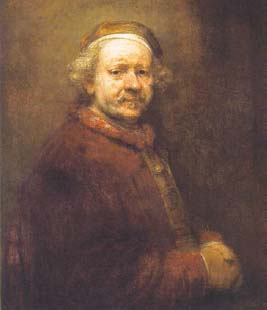Baroque and Beyond C. 1600–1850Dutch and Flemish Painting |
Who was Rembrandt? |
Rembrandt van Rijn (1606–1669) was a Dutch painter known for his expressive paintings and prints, including portraits, landscapes, and both mythological and biblical scenes. His paintings often rely on dramatic chiaroscuro, which highlights the faces of his figures against dark, sometimes nearly black, backgrounds. He is considered one of the most important artists of the seventeenth century. He worked in Amsterdam for mostly Protestant patrons, usually wealthy merchants who commissioned portraits. Seventeenth-century Amsterdam was an economic powerhouse and his paintings were in high demand as luxury items and financial investments. During his lifetime he achieve incredible wealth and success, only to lose it all in his later years. His changes in fortune are documented in his approximately seventy-five thoughtful self-portraits. Some of his notable works include The Night Watch (1642), The Anatomy Lesson of Dr. Nicolaes Tulp (1632) and Bathsheba at Her Bath (1654).

The Dutch master Rembrandt painted dozens of self-portraits, which serve to document the artist’s changing fortunes over the course of his life.
